DHA in Baby Formula: Everything you Need to Know
Tiny tots, big brains: We reveal the power of DHA, an Omega-3 fatty acid, in infant formula.

Mommyhood101 independently tests and curates baby gear to help you make informed decisions. If you buy products through links on our site, we may earn a commission.
During the first year of your baby's life, your goal as a parent is to keep them happy, safe, and healthy.
This includes providing them with the tools they need to properly develop their central and peripheral nervous systems.
In this article, you will learn that DHA is one of those many tools, playing an important role in brain and visual system development.
You will also learn how DHA is sourced and manufactured, and what to look for in a baby formula with DHA.
-
- What is DHA?
- DHA in Baby Formula
- Benefits of DHA for Infants
- Cognitive Development
- Visual System Development
- Physical Development
- Immune System Support
- Sources of DHA in Baby Formula
- Hexane in DHA Extraction
- How Much DHA Should be in Baby Formula?
- DHA in Baby Formula versus Breast Milk
- Side Effects & Precautions
- Storage & Handling
- Conclusions
- Scientific References
Once you finish reading this article, be sure to check out our reviews of the best organic formulas, all of which use thoughtfully sourced DHA.
What is DHA?
DHA stands for docosahexaenoic acid.
DHA is a long-chain omega-3 fatty acid primarily found in certain marine sources, such as fatty cold-water fish (e.g., salmon, tuna, herring) and shellfish (e.g., mussels, oysters).

There are also a few vegetarian and vegan DHA sources, including seaweed and algae (and algal oil).
As an Omega-3, DHA is a healthy fat (polyunsaturated fatty acid) that has diverse effects on several health-related outcomes.
This includes fetal and infant health and development. During pregnancy and breastfeeding, experts encourage women to eat 8-12 ounces of seafood per week to ensure adequate DHA consumption. Good options are salmon, sardines, trout, and herring because they are not only high in DHA but also low in mercury.
DHA in Baby Formula
Because DHA is a fundamental building block for the brain and eyes, and plays a crucial role in various bodily functions, it tends to be included in most baby formulas.
In the United States, the Food and Drug Administration's (FDA) regulations do not mandate the inclusion of DHA in baby formula. They do, however, mandate the inclusion of an Omega-6 fatty acid, specifically linoleic acid (LA). Linoleic acid is abundant in human breast milk, comprising about 10% of its fatty acid content.
Because the United States does not mandate DHA inclusion, it is also not required to be disclosed in the nutrition facts. This makes it challenging to know exactly how much DHA is included in most U.S. baby formulas.
In Europe, the European Commission requires all infant formulas to contain DHA at 0.33-1.14% of total fat. In general, the EU tends to be ahead of the US in terms of baby formula requirements; we expect the US FDA to mandate DHA in the next few years.
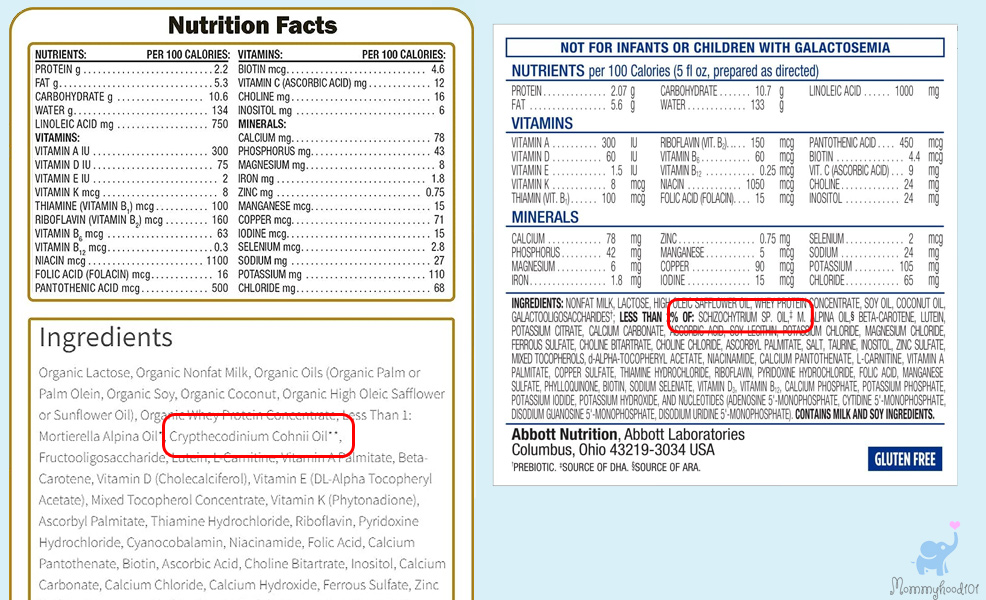
In the above image, on the left (Earth's Best Organic Baby Formula) you can see crypthecodinium cohnii oil (often called c. cohnii oil), and on the right (Similac Advance Infant Formula) you can see the inclusion of schizochytrium sp. oil. Notice how neither nutrition facts label, however, lists the amount of DHA included.
Baby formulas from other parts of the world, such as Europe (e.g., Holle, HiPP, Kendamil), New Zealand (e.g., Nannycare), and Australia (e.g., Bubs), all conveniently list DHA content in their nutrition facts. Here are two examples of that:
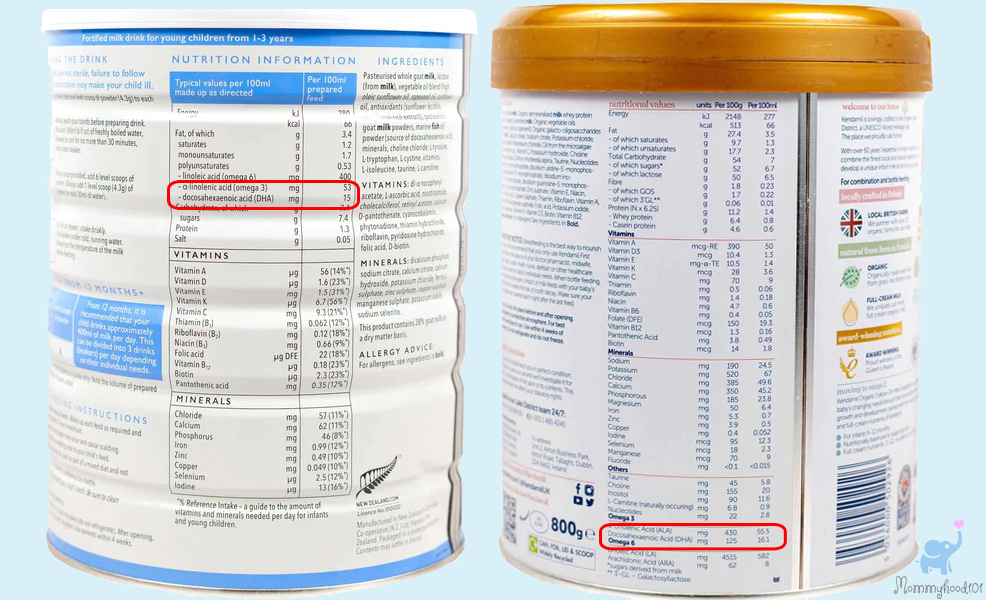
On the left is a Nannycare formula label, showing 15mg DHA per 100mL of prepared formula. On the right is a Kendamil organic formula label, showing 16.1mg of DHA per 100mL of prepared formula.
Fish oil in infant formula is relatively rare, as manufacturers seek cheaper manufacturing solutions and try to avoid the fishy odor or taste that can accompany the use of fish oil. One good example of a baby formula that uses fish oil is Nannycare baby formulas (see our review here).
Benefits of DHA for Infants
DHA is found naturally in breast milk. While the concentration of DHA in breast milk is low, at about 0.3% of total fatty acids, it typically provides the essential DHA needed by a preterm or term infant.
In the United States, the overall concentration of DHA in breast milk (about 0.2% of total fatty acids) tends to be lower than in most of the world, likely due to less fish, eggs, and red meat in American women's diets.
Higher concentrations of DHA in breast milk have been linked to several positive outcomes for developing children, including benefits to cognitive, visual, nervous system, and immune system function.
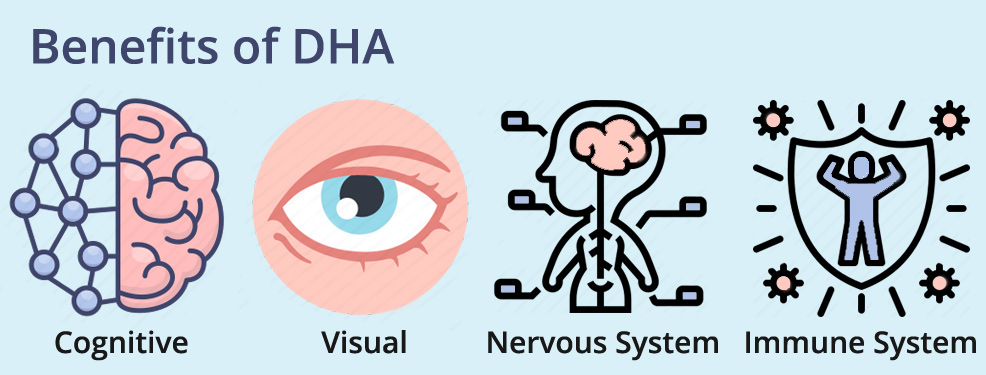
This evidence led to an international recommendation (in 2008) for pregnant and lactating women to consume 200mg of DHA in supplement form, or from eating 8-12 ounces of seafood per week (from low mercury sources, such as salmon).
Note that a single can of light canned tuna fish usually contains about 5 ounces of tuna (and low mercury content), meaning that two cans per week would satisfy this requirement.
It is important to realize that DHA is found as a structural component of membranes across the central and peripheral nervous system. While your child is a fetus, their brain accumulates DHA primarily during the third semester and then through the first two years of life.
Fetuses and young infants do not develop much DHA naturally (unlike adults), so supplementation is important.
There are five primary sources of DHA for a developing fetus and infant:
- During pregnancy, the mother provides DHA to the fetus through the placenta.
- During breastfeeding, the mother provides DHA to the infant through breast milk (about 0.3% of the fatty acids in breast milk is DHA).
- During formula feeding, the formula provides DHA to the infant through the addition of natural and/or synthetic sources.
- During solid food eating, certain foods naturally provide DHA to the infant, especially fatty fish and other marine sources.
- During the first few years of life, the infant will naturally (endogenously) produce their own small (but increasing) amounts of DHA.
Below are some of the benefits of DHA, summarized across these five phases and sources.
Cognitive Development
In studies examining the effects of DHA on infants' cognitive development, researchers tend to focus on sensory and perceptual processes, knowledge, problem-solving, memory, and early language production and comprehension.
In general, studies have found that infants fed with DHA-supplemented formula (versus formula not supplemented with DHA) tended to show:
- Higher mental development scores (on the Bayley mental development index II) at 18 months of age.
- Higher problem-solving skills on a cognitive test at 10 months of age.
It is important to point out, however, that larger studies examining neurocognitive outcomes for infants who used baby formula with versus without DHA supplementation show different results. For example, in some of the largest studies to date, researchers found no evidence for cognitive benefits at 14 or 18 months of age.
Note that most studies combine DHA and ARA in baby formula, but some studies suggest that the benefits of this combination are primarily due to DHA.
Visual System Development
A study examining the effects of DHA supplementation in infants' baby formula on visual system development, found the following effects when examining the results of 14 different experiments:
- Increased visual acuity at 2 months of age.
- Increased visual acuity at 4 and 6 months of age.
- More mature visual acuity at 12 months of age.
It is important to point out, however, that some studies find no evidence of a visual acuity change with DHA. A large-scale meta-analysis combining results from many studies suggests that DHA has a positive effect on vision during the first 2-4 months of life, but not necessarily after that point.
Importantly, a final study found that the dose of DHA was strongly associated with its effects on visual acuity: generally higher doses of DHA showed more positive effects on visual acuity at 4 months of age.
Physical Development
Studies examining the relationship between DHA and physical development have found several important findings.
First, the level of DHA in mothers during pregnancy (either naturally or supplemented) is associated with:
- Higher gestation duration, meaning longer pregnancies.
- Higher birth size, specifically taller babies with larger heads.
- Lower rates of premature birth.
- Reduction of very-low weight births.
Second, breastfeeding mothers who supplement with DHA tend to have:
- Infants with larger heads at 2 years of age.
Immune System Development
A mature immune system reduces susceptibility to infection and reduces the likelihood of developing allergies to food and other environmental exposures.
DHA is present in the membranes of immune system cells and is thought to influence immune function.
Studies examining DHA supplementation in pregnant women find:
- Increased umbilical cord blood immune cells and their responses.
- Infants with reduced allergic responses to eggs at 12 months of age.
- Infants with reduced risk of atopic dermatitis at 12 months of age.
- Children with reduced asthma at ages 3-5 years.
Studies examining DHA supplementation in infant formula (versus baby formula without DHA), find that children have:
- Similar immune markers to those fed breast milk.
- Reduced risk of allergic disease.
- Reduced risk of respiratory illness.
- Generally higher immune system function at 12 months of age.
Sources of DHA in Baby Formula
There are several possible sources of DHA in baby formula:
- Crypthecodinium cohnii (c. cohnii) algae oil (contains 20-25% DHA).
- Schizochytrium sp. oil, which is an algal oil (contains 40-43% DHA)
- Ulkenia sp. oil, which is an algal oil .
- Fish oil, which contains about 10-15% DHA.
DHA can also be extracted from egg phospholipid and triglyceride fractions, though we are not familiar with any infant formulas using those as a DHA source.
Most of the best goat milk formulas use fish oil as a DHA source.
All of these DHA sources are generally recognized as safe (GRAS) by the U.S. FDA, Health Canada, Food Standards of Australia and New Zealand (FSANZ), and/or the European Union.
Note that there are several brand names associated with DHA extracted from various marine sources. For example, DHA single cell oils, trademarked as DHASCO and DHASCO-B (Martek Biosciences), are extracted from c. cohnii.
In most cases, these DHA sources (Schizochytrium sp., C. cohnii, and Ulkenia sp. oils) are manufactured in a laboratory. This involves extracting the oils from fermented algae (shown in the below image).
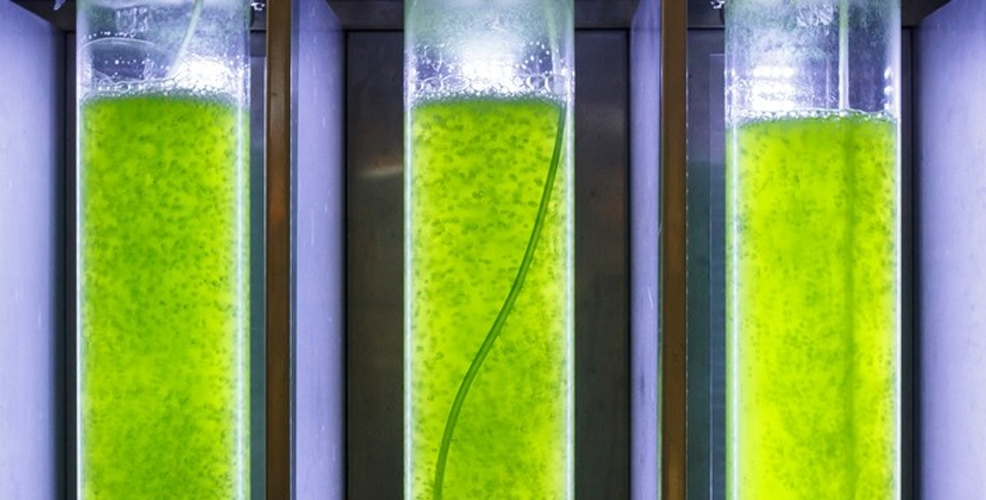
In our opinion, the best DHA source in baby formula is fish oil.
However, we do realize that it has become increasingly difficult to find a baby formula that uses fish oil.
Hexane Used in DHA Extraction
Some parents and third parties have raised concern that DHA from algal oils is manufactured using the toxic solvent hexane (and in some cases, ethyl acetate).
Specifically, the oils are extracted from dried algae by blending with hexane. The hexane is then removed through a distillation or vacuum evaporation process.
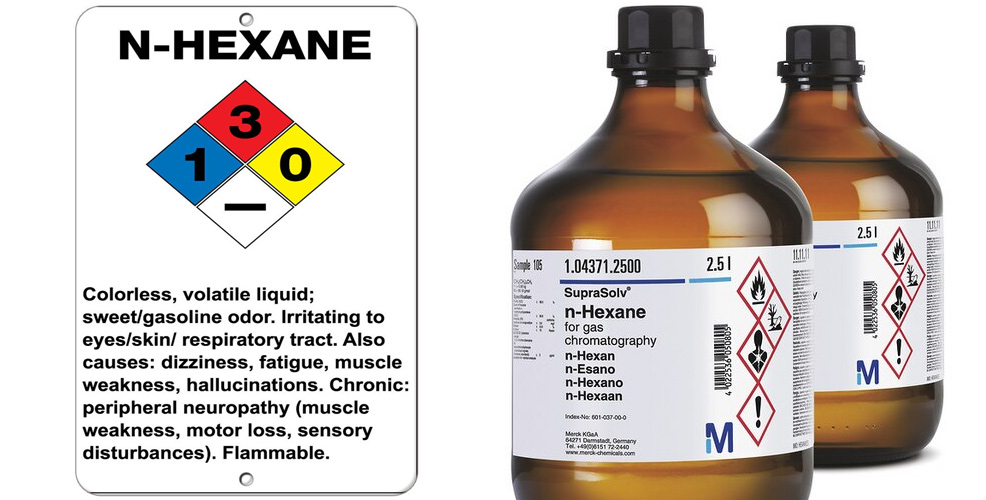
While there is no evidence to suggest that hexane is present in baby formulas at levels that would be harmful to infant health or development, some believe that even trace amounts are cause for concern. For example, they believe that these oils should not be included in organic baby formulas, and that they cause diarrhea and other gastrointestinal side effects (see a strongly biased report here).
While the inclusion of DHA from algal oils might cause upset stomachs in some infants, there is no evidence that this has anything to do with hexane. Furthermore, USDA organic standards require that at least 95% of an organic product is comprised of organic content. In other words, the product can have up to 5% non-organic ingredients.
In any case, due to the concern over potential hexane content, many international food standards set maximum hexane levels for infant formula.
For example, the Food Standards of Australia and New Zealand (FSANZ) set a maximum hexane concentration (in mg/kg) of 0.3 in Schizochytrium sp. oil. This means that in 6 ounces of prepared baby formula, the maximum hexane trace content would be about 0.008mg (or 8 micrograms).
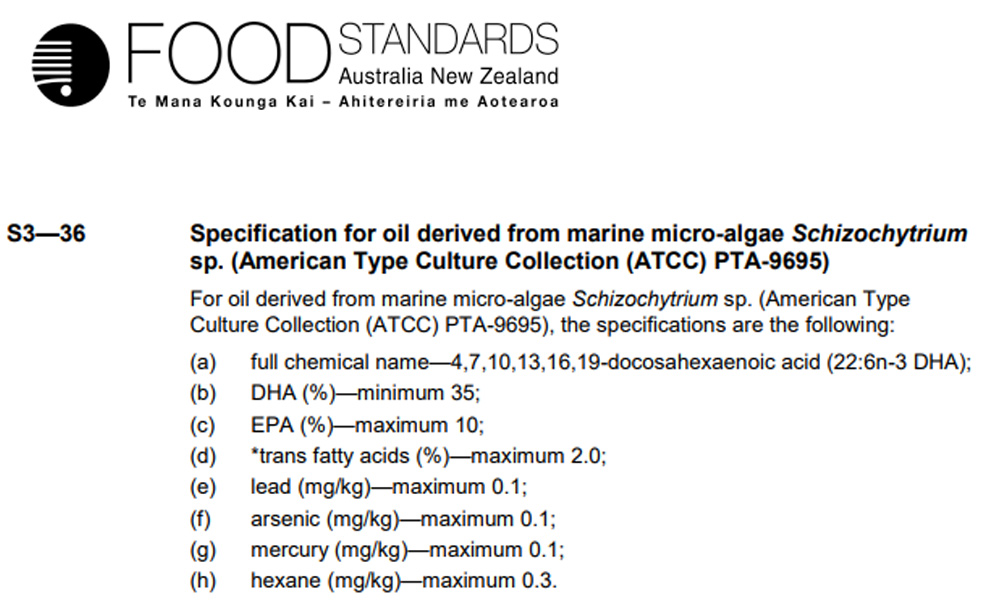
In another example, the European Commission does not allow DHA oils to be included in baby formula if they have used hexane extraction methods.
Martek Biosciences, a leading manufacturer of algal oils, notes in their manufacturing information that "no detectable residues of extraction solvents, pesticide residues, PCB's or any heavy metals such as arsenic, mercury, cadmium and lead" can be found in their oils.
However, the manufacturer has not disclosed the results of these tests to the public. Nor do we know the detection methods used or their sensitivity.
Thus, while we are not aware of any evidence that baby formulas using algal oils contain trace amounts of hexane, more sensitive methods such as accelerator mass spectrometry could find residual hexane in the future. In the meantime, some scientists have called for new extraction methods to reduce the use of potentially harmful solvents.
How Much DHA Should be in Baby Formula?
The American Academy of Pediatrics (AAP) recommends that infants have a DHA intake of 0.35% of total fatty acids consumed.
This number is (not surprisingly) about the same as what is found in breastmilk, which has approximately 0.35% DHA content of total fatty acids.
In Europe, the European Commission requires that infant formulas contain DHA at 0.33% to 1.14% of total fats (which is about 20-50mg per 100kcal).
Using these data, we can ascertain that baby formula should contain approximately 10-15mg of DHA in 100mL (or 3.4 ounces) of prepared formula. Some have slightly higher DHA content, and some have slightly lower content; that is generally not cause for concern.
DHA in Baby Formula vs Breast Milk
Breast milk naturally contains DHA, making it the best possible source of nourishment. We all know that breast is best!
However, DHA in baby formula is intended to bridge the traditional nutritional gap for formula-fed infants.
Studies comparing infant formulas with versus without added DHA show the developmental advantages listed above, suggesting that DHA supplementation in infant formula is important for child development.
However, it is important to realize that no baby formula can precisely emulate breast milk and its inherent advantages. In this manner, while the DHA content of infant formula might be similar to that of breast milk, infant formula is still highly dissimilar to breast milk in several ways.
We are still a long way off from replicating the unique enzymes, antibodies, white blood cells, amino acids, and prebiotics found in breast milk.
Side Effects & Precautions
DHA-enriched baby formula is generally safe for infants, and most infants will not experience any adverse side effects from consuming it.
However, some babies may experience mild digestive issues, such as gas, bloating, or diarrhea.
If you notice any adverse reactions, consult your pediatrician for guidance; they might have some good advice about how to mitigate or avoid its impact on your little one.
Storage & Handling
Always read the manufacturer's instructions for the proper storage and handling of baby formula.
This will help keep the formula fresh and avoid premature degradation of ingredients with relatively low stability profiles (such as DHA).
In general, storage and handling guidelines do not vary as a function of whether or not the formula includes DHA.
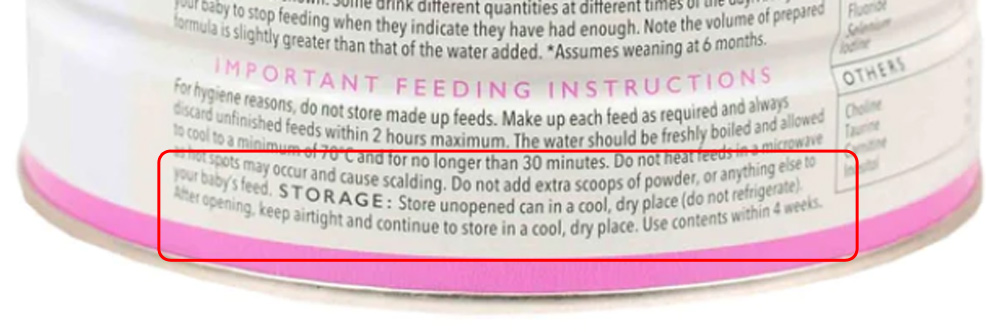
Most baby formulas will recommend storing the unopened formula can in a cool, dry place (and not putting it in the refrigerator). Once the formula is opened, they usually recommend keeping the can sealed airtight (the lid securely closed) and continuing to store it in a cool, dry place (and not in the refrigerator).
Most baby formulas also recommend using the formula within 3-4 weeks of opening, but be sure to read the label because it varies by manufacturer!
Conclusions
In conclusion, DHA is a critical nutrient for an infant's early development, and its inclusion in baby formula is intended to match the nutritional composition of breast milk.
DHA consumed by mothers during pregnancy and breastfeeding appears to have positive effects on their child's cognitive, visual, physical, and immune system development. The same appears to be true for DHA consumed by infants as part of their baby formula. However, results are not entirely consistent across studies, and more research remains to be done.
Current evidence suggests that the use of solvents such as hexane during the extraction of algal oils does not carry any negative effects. We found no scientific evidence for trace hexane in algal oils, or any reason to believe it might be present in infant formulas.
However, we do believe that fish oil is a preferred DHA source and that new methods (such as water-based extraction) should become more popular over the next few years.
Whether through breast milk or DHA-enriched formula, ensuring your baby receives adequate DHA during the early stages of life can have long-lasting positive effects on their overall health and well-being.
Scientific References
Auestad, N., Halter, R., Hall, R. T., Blatter, M., Bogle, M. L., Burks, W., ... & Bornstein, M. H. (2001). Growth and development in term infants fed long-chain polyunsaturated fatty acids: a double-masked, randomized, parallel, prospective, multivariate study. Pediatrics, 108(2), 372-381.
Carlson, S. E., Colombo, J., Gajewski, B. J., Gustafson, K. M., Mundy, D., Yeast, J., ... & Shaddy, D. J. (2013). DHA supplementation and pregnancy outcomes. The American journal of clinical nutrition, 97(4), 808-815.
Colombo, J., Gustafson, K. M., Gajewski, B. J., Shaddy, D. J., Kerling, E. H., Thodosoff, J. M., ... & Carlson, S. E. (2016). Prenatal DHA supplementation and infant attention. Pediatric research, 80(5), 656-662.
Echeverría, F., Valenzuela, R., Hernandez-Rodas, M. C., & Valenzuela, A. (2017). Docosahexaenoic acid (DHA), a fundamental fatty acid for the brain: New dietary sources. Prostaglandins, Leukotrienes and Essential Fatty Acids, 124, 1-10.
Gustafson, K. M., Liao, K., Mathis, N. B., Shaddy, D. J., Kerling, E. H., Christifano, D. N., ... & Carlson, S. E. (2022). Prenatal docosahexaenoic acid supplementation has long-term effects on childhood behavioral and brain responses during performance on an inhibitory task: prenatal DHA and childhood inhibitory performance. Nutritional neuroscience, 25(1), 80-90.
Juber, B. A., Jackson, K. H., Johnson, K. B., Harris, W. S., & Baack, M. L. (2016). Breast milk DHA levels may increase after informing women: a community-based cohort study from South Dakota USA. International breastfeeding journal, 12, 1-9.
Khor, G. L., Tan, S. S., Stoutjesdijk, E., Ng, K. W. T., Khouw, I., Bragt, M., ... & Muskiet, F. A. (2020). Temporal changes in breast milk fatty acids contents: a case study of Malay breastfeeding women. Nutrients, 13(1), 101.
Lien, E. L., Richard, C., & Hoffman, D. R. (2018). DHA and ARA addition to infant formula: Current status and future research directions. Prostaglandins, Leukotrienes and Essential Fatty Acids, 128, 26-40.
Lucas, A., Stafford, M., Morley, R., Abbott, R., Stephenson, T., MacFadyen, U., ... & Clements, H. (1999). Efficacy and safety of long-chain polyunsaturated fatty acid supplementation of infant-formula milk: a randomised trial. The Lancet, 354(9194), 1948-1954.
Miles, E. A., Childs, C. E., & Calder, P. C. (2021). Long-chain polyunsaturated fatty acids (LCPUFAs) and the developing immune system: a narrative review. Nutrients, 13(1), 247.
Uauy, R., Hoffman, D. R., Mena, P., Llanos, A., & Birch, E. E. (2003). Term infant studies of DHA and ARA supplementation on neurodevelopment: results of randomized controlled trials. The Journal of pediatrics, 143(4), 17-25.
van Dijk, S. J., Zhou, J., Peters, T. J., Buckley, M., Sutcliffe, B., Oytam, Y., ... & Muhlhausler, B. S. (2016). Effect of prenatal DHA supplementation on the infant epigenome: results from a randomized controlled trial. Clinical epigenetics, 8(1), 1-13.

ARA in Baby Formula: Everything you Need to Know
ARA is an essential Omega-6 fatty acid found in baby formula. Learn about how ARA is...

Breastfeeding: How to Increase Milk Supply
Breastfeeding is a journey with a greater learning curve than many new mothers expect....
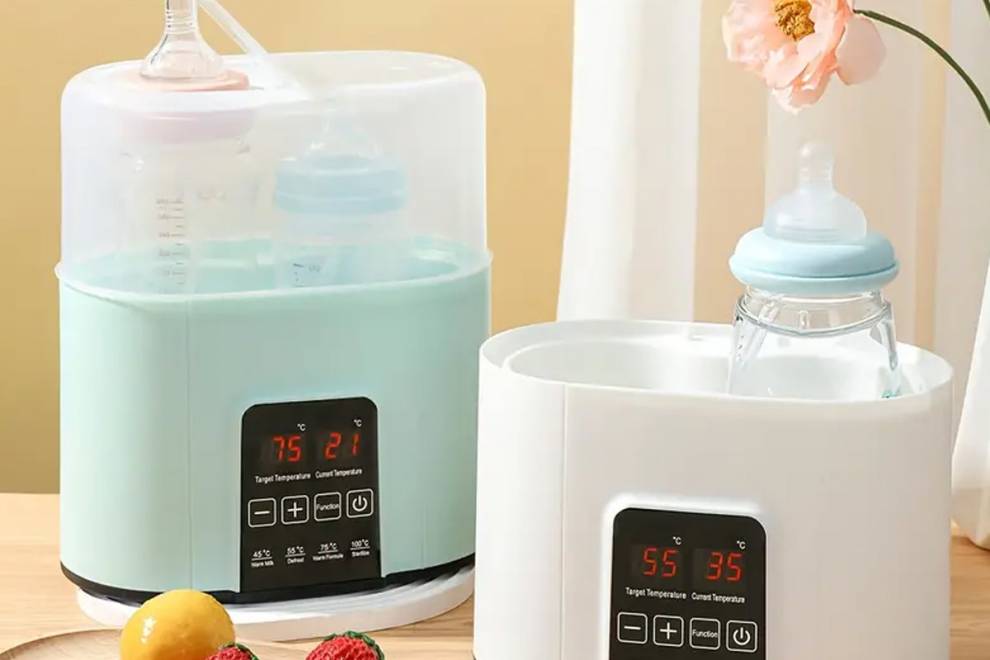
Best Bottle Warmers of 2024, Tested & Reviewed
Whether you're thawing frozen breast milk or warming prepared baby formula or baby food...
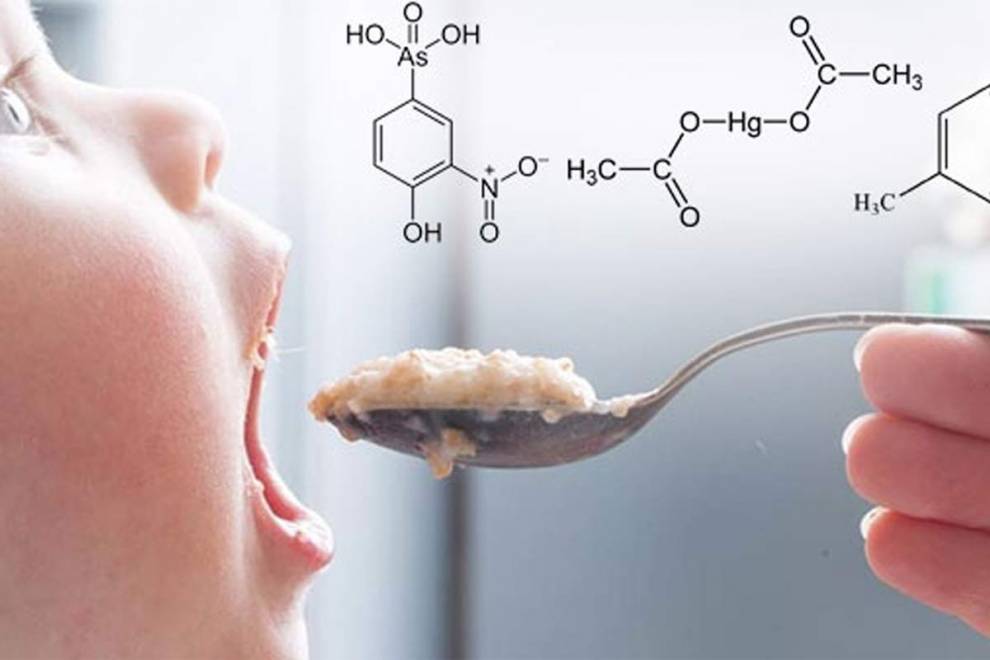
Baby Foods and Formulas Without Heavy Metals? A Few Options
A study released by the non-profit Healthy Babies Bright Future (HBBF) organization is...


